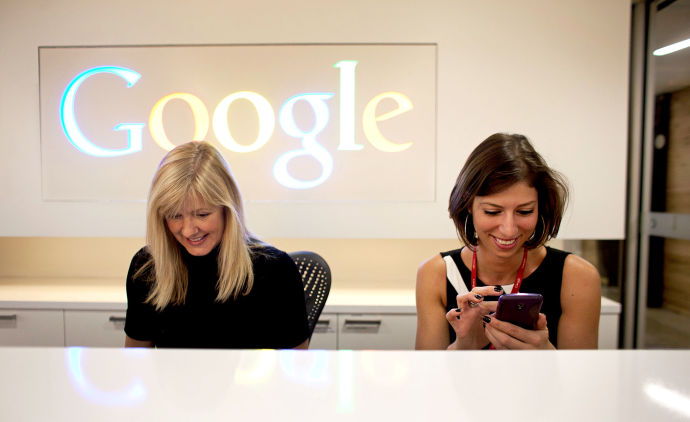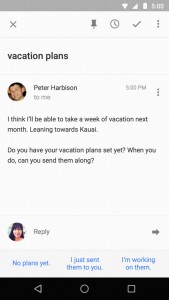
Google’s AI can now automatically help you reply your mails (MUST READ)
Ever wished something or someone could automatically reply your email messages?; Well, Google has done it again by unveiling this new technology that’s at least moving in that direction. Using what’s called “deep learning” – a form of artificial intelligence that’s rapidly reinventing a wide range of online services.
Google just gave a little bit of help to anyone tired of typing out the same reply to emails over and over again. Now, software will do some of the work for you. An updated version of Inbox, one of Google’s mail apps, will “read” your emails and offer up suggested replies. The idea is that you can rapidly respond to someone while on the go without having to manually tap a fresh message into your smartphone keyboard.
“The network will tailor both the tone and content of the responses to the email you’re reading,” says Google product management director Alex Gawley. It gives you three of these responses, and you can then choose the one that best suits what you want to say.
Dubbed Smart Reply, the system learns to generate appropriate replies by analyzing scads of email conversations from across Google’s Gmail service, the world’s most popular internet-based email system. A deep learning service feeds information into what’s called a neural network, a vast network of machines that approximates the web of neurons in the human brain and this neural network analyzes the information in order to “learn” a particular task. By analyzing thousands of cat photos, for instance, a neural net can learn to identify a cat. By analyzing a database of spoken words, it can learn to recognize the commands you speak into your smartphone. In this case, the system learns to compose email replies by analyzing real-world email conversations.

Actually, the Smart Reply system uses two neural networks. After the first one analyzes the email at hand—distilling what is being said—a second takes this information and works to generate the potential responses. This network builds these replies one word at a time, much as you would.
With Smart Reply, Google is rightly keeping the scope of the application as small as possible. The replies it generates are between three and six words long. But Gawley says that within this small scope, the system proves surprisingly nuanced. In some cases, for instance, it can tell when an email includes a joke and suggest the reply “Ha. Very funny.” If someone asks “Do you have your vacation plans set yet? When you do, can you send them along?,” the potential replies might be: “No plans yet,” “I just sent them to you,” and “I’m working on them.”
Other common replies include “Thanks,” “Sounds good,” and “How about tomorrow?” But it’s important to remember that the system isn’t offering a canned catalog of replies. In effect, the AI really is “reading” your email and coming up with what it judges the most appropriate original response in the context of a specific message. According Gawley, the system can generate about 20,000 discrete responses.
Google has started sharing the system with the general public, and as time goes on, it will only get better. But let’s hope it doesn’t get too good. Help with rapid-fire replies is one thing. But there is something to be said for, you know, actually writing your own email.








